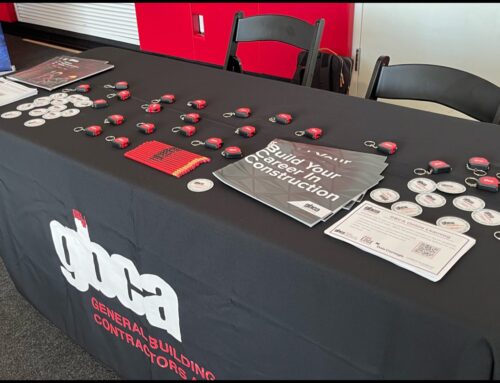This Fatal Facts Toolbox Talk was created in support of OSHA’s Focus Four Training Campaign. OSHA representatives, safety professionals from GBCA member companies, and union representatives from the Building Trades Council of Philadelphia, Pennsylvania & Vicinity met to develop these safety resources to share with the region’s construction industry.
FATAL FACTS describe cases that are representative of employers who failed to identify and correct hazardous working conditions, leading to fatalities at their worksites. This document offers ideas on how to identify and correct these hazards, and to educate workers about safe work practices.
Click below to download the Toolbox Talk as a handout (includes Sign-In Sheet).
Fatal Facts: Unprotected Section of Trench Collapse
Brief Description of Incident
A 60-year old male employee was working on the installation of a new 36” sewer drainage pipe in an excavation. The employer was working as a contractor for a local borough installing catch basins and a new storm sewer system. Two employees had entered the trench to put a collar on to join two sections of piping and to check the grade of the pipe. The employees were working inside of a trench box shielding the nine foot trench walls. They were entering and exiting the trench using a ladder that was located outside the trench box, in an unprotected section of the excavation. One employee had climbed the ladder and was standing on the pavement at the edge of the trench. While the second employee was climbing up the ladder the trench wall collapsed, pinning the employee against the ladder and burying him up to his chest. The employee was asphyxiated.
The dimensions of the trench were 41 feet long, 8 feet wide and 7 to 9 feet deep with near vertical walls. Soil analysis determined that the classification was Type B soil. The employer’s superintendent was identified by the employer as the “competent person”.
The superintendent was onsite for the duration of the day of the event and had observed the employees going into the unprotected section of the trench.
Likely Causes of Incident
The following are likely causal factors: major, unplanned, or unintended contributors of the incident. Eliminating causal factors would have either prevented the incident or reduced its
severity. It can also stop the potential frequency of similar incidents.
- Lack of training for workers on trench safety.
- Ladder placed outside of protective system (trench box).
- Lack of inspection of trench by a competent person.
Incident Prevention
These actions could have prevented this incident:
- Proper location of the ladder (access in and out of the trench).
- Inspection of trench and access by a Competent Person trained in identifying hazards, mitigation and implementation of controls.
- Pre-planning. Creation and review of a Job Hazard Analysis before starting.
Hazard Prevention and Control
Remember the following to prevent and control the hazards that led to this incident:
- Never enter a trench unless it has been properly inspected (daily) by a Competent Person.
- Ensure there is proper and safe access and egress in the trench.
- Pre-planning. Create written safety plans (Job Hazard Analysis (JHA)).
- Empower employees to feel safe to call out unsafe conditions and shut down the job if needed.
Can you provide any additional insights or suggestions on how to identify or avoid the hazards in this incident? Consider how other types of hazards could have also contributed to the fall hazards.
- Discuss.
Toolbox Talk Safety Huddle Questions
Consider the following questions about the hazards and available resources on this jobsite:
- What other caught-in/-between hazards do you routinely address on your worksites?
- What training do you provide for your employees that pertains to these hazards?
- What types of prevention have you tried at your sites?
- What approaches have worked well in controlling hazards?
- Has anyone had any recent incident experiences? What went wrong? What was the corrective action?
- What type of training has been provided to your supervisors?
- Is there any tracking of their hazard identification and correction activities?
- Does anyone do plan reviews after the project has started? Do the general plans get modified for site specific activities?
Remember to record the attendees of your toolbox talk!
Access GBCA’s full library of toolbox talks:





